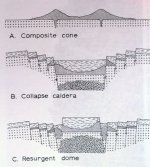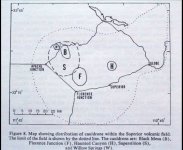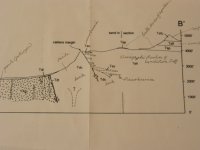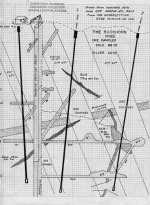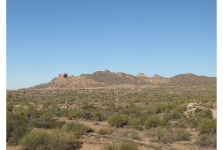Crow
Silver Member
- Jan 28, 2005
- 3,725
- 10,361
- Detector(s) used
- ONES THAT GO BEEP! :-)
- Primary Interest:
- Other
While this is indeed a thread of superstition mountain legends in which we all know the Lost Dutchman legends and the Peralta legend dominate such legends of the superstitions.
There is another story that gets a little lost and forgotten. It can be argued that its not in superstition mountains but as the exact borders of what was known as superstitions some times have been ill defined. Some times the area is defined within the Superstition mining district.
That area is next to Superstition wilderness park. With a collective name of Goldfield. That for a time was a once productive goldfield.
Charles L Hall was already a successful businessman with numerous business when he came down from Denver Colorado and bought out the mining claims of 3 Mormon gold prospectors for the then absurd sum of 20 thousand dollars. What was then was to a little known gold strike found west of Superstitions.
Here is a picture of Charles and his wife below.
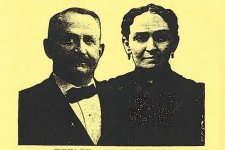
A former underground Au-Ag-Mo-Mn-Cu mine that Charles hall and his business partner D Sullivan is located on 88 claims (1920) in sec. 1, T1N, R8E, about ¾ mile SE of Goldfield, 2 miles ESE of Saddle Rock, between the Superstition and Goldfield Mountains, 36 miles East of Phoenix, on private land.
Underground mining started the early 1890's and originally owned by C. Hall & D. Sullivan. Operating between 1893-1894, a lot of gold mineralization is hosted in rhyolite.
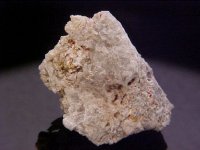
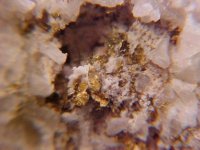
The geological setting is a pediment floored by coarse-textured granite, indurated conglomerate and granite breccia. The principal workings are in the vicinity of 2 Northward-trending, steeply Westward-dipping faults that outcrop about 300 feet apart. Tertiary volcanic fields are adjacent to this mine, both NW & SE of the drainage where it is located.
Width below the 426 foot level ranges from 16-36 feet, all worked for the 1240 foot length. Workings include at least three shafts. The main shaft was sunk to the 1000 foot level. Additionally, thousands of feet of drifts were driven. Workings overall totaled 377.95 meters in length and 304.8 meters in depth. One named working is the 'Mormon stope.'Named after the three Mormon prospectors that the mine was bought from.
As you can see from The Denver National bank accounts. The mine was very productive.
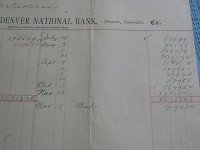
However disaster struck in 1894 when a massive flood when buried workings and flooded the mine. Technology available at the time was unable to dewater the mine. In 1906 Charles L Halls son Died and Charles Hall died himself an old man in 1907. Thus his wife was left deal with a flooded mine. In the end Halls wife sold off the family assets and the Mammoth mine as it was called was sold.
The Young Mines Co., Ltd., headed by G.U. Young an ex employee of Hall, acquired the property in 1910 and spent about 15 years exploring it.Used massive steam pumps to dewater the mine. But hit the north west trending fault and could not locate the continuation of the lode. However he and other operators included Young Mines Co.; Goldfield Mines; E.L. Jones; E.H. Shumway; and Hebner & Funk tried in vain to find the direction of gold lode in Mormon stope with had hit one of the north west trending faults.
So the mystery was? Was there more gold beyond the north west trending fault?
As you can see below the mining area of goldfeild was in a collapsed caldera.
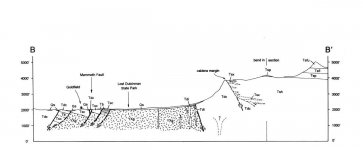
And there is a theory that between the bulldog mine in west and the mammoth mine in east there is a continuation of the Mormon stope on the other side of north west trending fault.
Crow
There is another story that gets a little lost and forgotten. It can be argued that its not in superstition mountains but as the exact borders of what was known as superstitions some times have been ill defined. Some times the area is defined within the Superstition mining district.
That area is next to Superstition wilderness park. With a collective name of Goldfield. That for a time was a once productive goldfield.
Charles L Hall was already a successful businessman with numerous business when he came down from Denver Colorado and bought out the mining claims of 3 Mormon gold prospectors for the then absurd sum of 20 thousand dollars. What was then was to a little known gold strike found west of Superstitions.
Here is a picture of Charles and his wife below.

A former underground Au-Ag-Mo-Mn-Cu mine that Charles hall and his business partner D Sullivan is located on 88 claims (1920) in sec. 1, T1N, R8E, about ¾ mile SE of Goldfield, 2 miles ESE of Saddle Rock, between the Superstition and Goldfield Mountains, 36 miles East of Phoenix, on private land.
Underground mining started the early 1890's and originally owned by C. Hall & D. Sullivan. Operating between 1893-1894, a lot of gold mineralization is hosted in rhyolite.


The geological setting is a pediment floored by coarse-textured granite, indurated conglomerate and granite breccia. The principal workings are in the vicinity of 2 Northward-trending, steeply Westward-dipping faults that outcrop about 300 feet apart. Tertiary volcanic fields are adjacent to this mine, both NW & SE of the drainage where it is located.
Width below the 426 foot level ranges from 16-36 feet, all worked for the 1240 foot length. Workings include at least three shafts. The main shaft was sunk to the 1000 foot level. Additionally, thousands of feet of drifts were driven. Workings overall totaled 377.95 meters in length and 304.8 meters in depth. One named working is the 'Mormon stope.'Named after the three Mormon prospectors that the mine was bought from.
As you can see from The Denver National bank accounts. The mine was very productive.

However disaster struck in 1894 when a massive flood when buried workings and flooded the mine. Technology available at the time was unable to dewater the mine. In 1906 Charles L Halls son Died and Charles Hall died himself an old man in 1907. Thus his wife was left deal with a flooded mine. In the end Halls wife sold off the family assets and the Mammoth mine as it was called was sold.
The Young Mines Co., Ltd., headed by G.U. Young an ex employee of Hall, acquired the property in 1910 and spent about 15 years exploring it.Used massive steam pumps to dewater the mine. But hit the north west trending fault and could not locate the continuation of the lode. However he and other operators included Young Mines Co.; Goldfield Mines; E.L. Jones; E.H. Shumway; and Hebner & Funk tried in vain to find the direction of gold lode in Mormon stope with had hit one of the north west trending faults.
So the mystery was? Was there more gold beyond the north west trending fault?
As you can see below the mining area of goldfeild was in a collapsed caldera.

And there is a theory that between the bulldog mine in west and the mammoth mine in east there is a continuation of the Mormon stope on the other side of north west trending fault.
Crow


